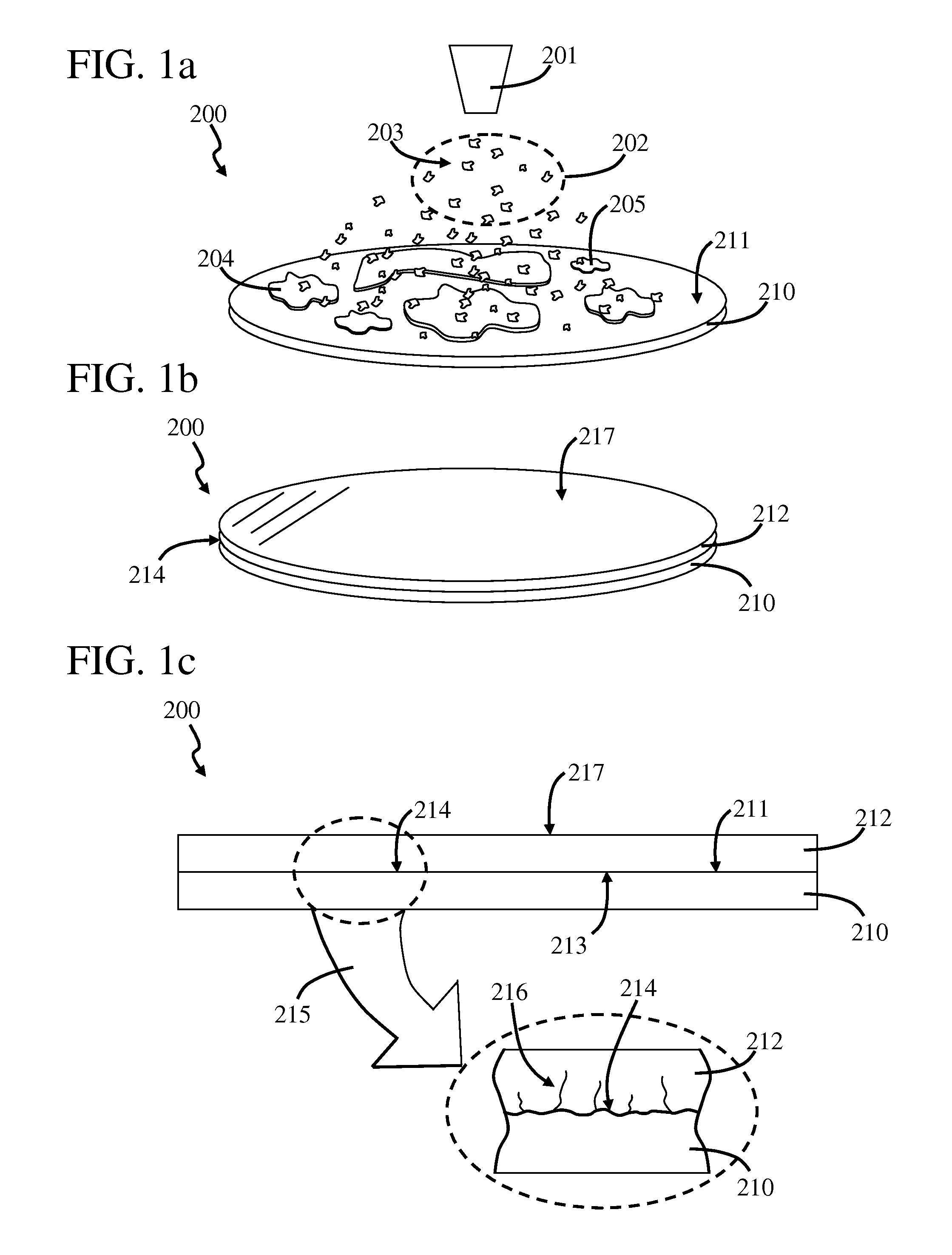Electronic circuit with embedded memory
a technology of embedded memory and electronic circuits, applied in the field of circuitry, can solve the problems of large chip area consumed by laterally oriented devices, large amount of chip area consumed by lateral oriented devices, and large amount of processing circuits idle for many cycle times,
- Summary
- Abstract
- Description
- Claims
- Application Information
AI Technical Summary
Problems solved by technology
Method used
Image
Examples
Embodiment Construction
[0050]FIG. 1a is a perspective view of a partially fabricated grown semiconductor structure 200. It should be noted that in the following figures, like reference characters indicate corresponding elements throughout the several views. Grown semiconductor structure 200 includes a substrate 210. Substrate 210 can be of many different types, such as a semiconductor substrate.
[0051]In this embodiments, a gaseous semiconductor material 203 is provided from a growth material source 201 in a region 202 proximate to a substrate surface 211 of substrate 210. It should be noted that, in general, more than one material sources are used to provide growth material and process gases. However, one material source is shown in FIG. 1a for simplicity and ease of discussion.
[0052]Portions of gaseous semiconductor material 203 engage surface 211 to form agglomerated semiconductor material 204 and 205. Portions of gaseous semiconductor material 203 engage surface 211 to form a grown semiconductor layer ...
PUM
 Login to View More
Login to View More Abstract
Description
Claims
Application Information
 Login to View More
Login to View More - R&D
- Intellectual Property
- Life Sciences
- Materials
- Tech Scout
- Unparalleled Data Quality
- Higher Quality Content
- 60% Fewer Hallucinations
Browse by: Latest US Patents, China's latest patents, Technical Efficacy Thesaurus, Application Domain, Technology Topic, Popular Technical Reports.
© 2025 PatSnap. All rights reserved.Legal|Privacy policy|Modern Slavery Act Transparency Statement|Sitemap|About US| Contact US: help@patsnap.com



